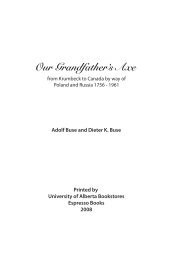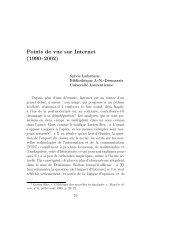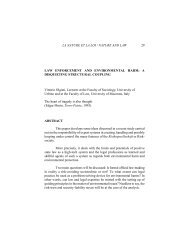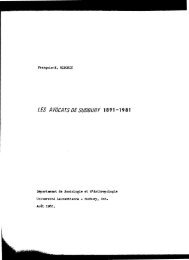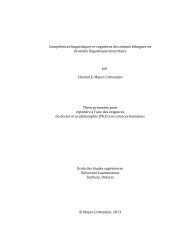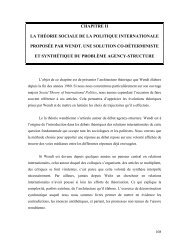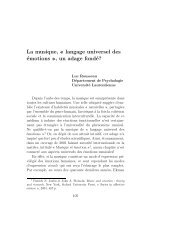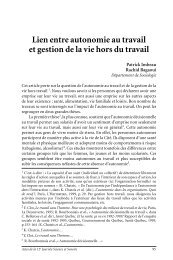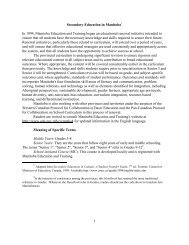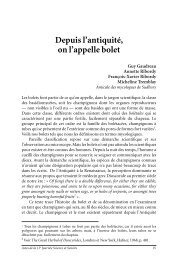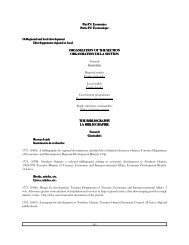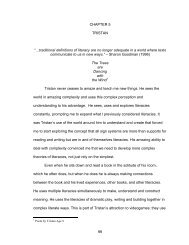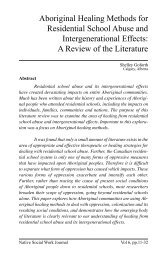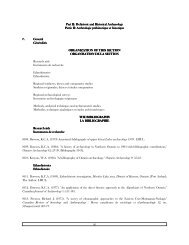NSERC grants at Laurentian University Subventions du CRSNG `a l ...
NSERC grants at Laurentian University Subventions du CRSNG `a l ...
NSERC grants at Laurentian University Subventions du CRSNG `a l ...
- No tags were found...
You also want an ePaper? Increase the reach of your titles
YUMPU automatically turns print PDFs into web optimized ePapers that Google loves.
121Nick VayenasReliability assessment of mining equipment using geneticalgorithms with probability distribution based fitnessfunctionA grant of $20,070 per year.Une subvention de 20 070 $ par année.Discovery Grant – Subvention à la découverteThis proposal is a continu<strong>at</strong>ion of an <strong>NSERC</strong> grantin the field of Genetic Algorithms (GAs) for reliabilityassessment of mining equipment. Compared to classicalreliability analysis, this research offers a novel approachwhich may lead to the formul<strong>at</strong>ion of a reliabilityassessment methodology based on GAs. Geneticalgorithms are stochastic search techniques based onthe principles of n<strong>at</strong>ural selection. The reliability ofa machine changes over time <strong>du</strong>e to its dependenceupon several factors (e.g. the oper<strong>at</strong>ing environment, number and quality ofrepairs). The use of GAs is intended to capture the impact of the factorson the reliability function of a machine by mimicking the process of heredityand n<strong>at</strong>ural selection. In GAs models, to progress from one popul<strong>at</strong>ion to thenext, members of the current popul<strong>at</strong>ion are repro<strong>du</strong>ced, crossed over andmut<strong>at</strong>ed based on the value of their current fitness using a Fitness Function(FF). So far, it has been found th<strong>at</strong> the use of the exponential probabilitydistribution as the FF in a GAs-based reliability model offers acceptablereliability estim<strong>at</strong>es. However, the st<strong>at</strong>istical properties of the exponentialdistribution conflict with the assumptions of heredity and survival of thefittest assumed by GAs. Furthermore, the maximum number of gener<strong>at</strong>ionsrequired to achieve st<strong>at</strong>istically acceptable reliability estim<strong>at</strong>es appear tovary significantly.Thus, it is now proposed to develop GAs-based models incorpor<strong>at</strong>ing othertheoretical distributions (e.g. Weibull) as FFs, as well as to investig<strong>at</strong>e thecriteria for the size of the initial popul<strong>at</strong>ion and for the maximum numberof gener<strong>at</strong>ions. The characteristics of the new models are expected to re<strong>du</strong>cethe constraints associ<strong>at</strong>ed with the st<strong>at</strong>istical assumptions imposed by the



